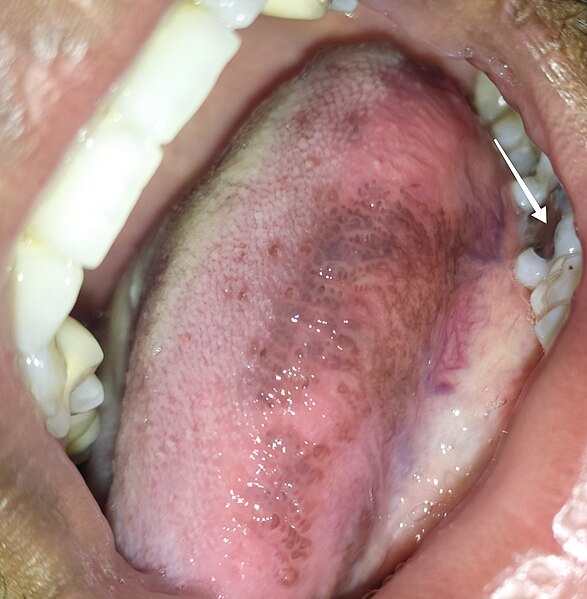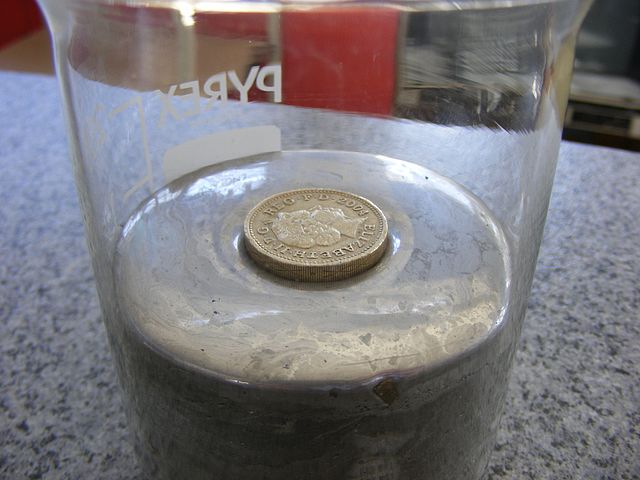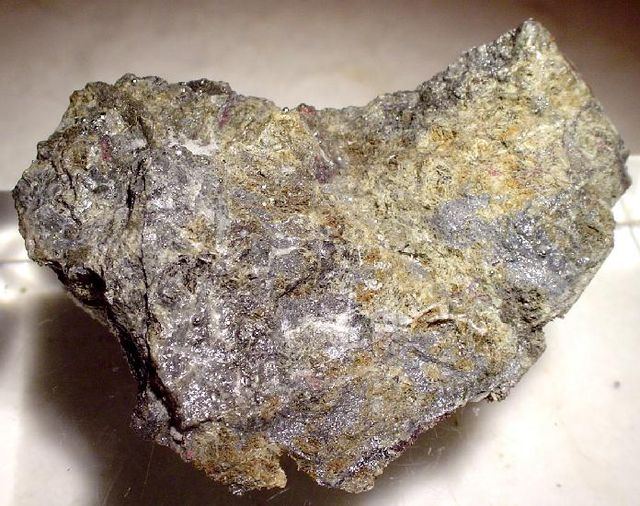In dentistry, amalgam is an alloy of mercury used to fill teeth cavities. It is made by mixing a combination of liquid mercury and particles of solid metals such a silver, copper or tin. The amalgam is mixed by the dentist just before use. It remains soft for a short while after mixing, which facilitates it being snugly packed into the cavity and shaped before it sets hard.
Amalgam filling on first molar
Amalgam separator
Amalgam induced lichen planus on the lateral surface of the tongue. Amalgam filling is indicated by white arrow
Mercury is a chemical element; it has symbol Hg and atomic number 80. It is also known as quicksilver and was formerly named hydrargyrum from the Greek words hydor (water) and argyros (silver). A heavy, silvery d-block element, mercury is the only metallic element that is known to be liquid at standard temperature and pressure; the only other element that is liquid under these conditions is the halogen bromine, though metals such as caesium, gallium, and rubidium melt just above room temperature.
Mercury (element)
An old pound coin (density ~7.6 g/cm3) floats on mercury due to the combination of the buoyant force and surface tension.
Mercury-discharge spectral calibration lamp
Native mercury with cinnabar, Socrates mine, Sonoma County, California. Cinnabar sometimes alters to native mercury in the oxidized zone of mercury deposits.







